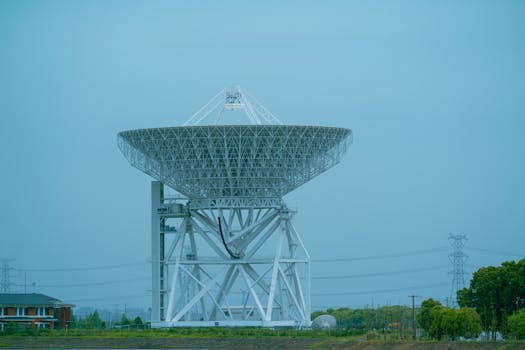The Future is Now: Exploring the Cutting-Edge Innovations in Satellite Telecommunications – Satellite Telecommunications

The Future is Now: Exploring the Cutting-Edge Innovations in Satellite Telecommunications – Satellite Telecommunications. The world of satellite telecommunications is on the cusp of a revolution, with cutting-edge innovations transforming the industry at an unprecedented pace. As technology continues to advance, the possibilities for satellite telecommunications are expanding, enabling faster, more reliable, and more widespread connectivity across the globe.
Satellite telecommunications have come a long way since the launch of the first commercial communications satellite, Intelsat 1, in 1965. Today, satellite constellations are being designed and launched to provide global coverage, with companies like OneWeb, SpaceX, and Amazon’s Kuiper Systems leading the charge. These constellations consist of hundreds, even thousands, of small satellites working in tandem to provide high-speed, low-latency internet connectivity to even the most remote and underserved regions of the world.
One of the key innovations driving the advancement of satellite telecommunications is the development of advanced signal processing technologies. These technologies enable satellites to transmit and receive signals more efficiently, resulting in faster data transfer rates and improved overall network performance. Furthermore, the use of artificial intelligence (AI) and machine learning (ML) is being explored to optimize signal processing, predict and prevent signal interference, and improve the overall quality of service.
Another area of innovation in satellite telecommunications is the development of new satellite architectures. Traditional geostationary satellites, which orbit the Earth at an altitude of approximately 36,000 kilometers, are being supplemented by newer, more agile satellite designs. These include low-Earth orbit (LEO) satellites, which orbit the Earth at an altitude of around 1,000 kilometers, and medium-Earth orbit (MEO) satellites, which orbit at an altitude of around 10,000 kilometers. LEO and MEO satellites offer several advantages over traditional geostationary satellites, including lower latency, improved signal strength, and increased flexibility.
In addition to these technological advancements, the satellite telecommunications industry is also undergoing significant changes in terms of business models and regulatory frameworks. The increasing demand for satellite-based connectivity is driving the development of new services and applications, such as satellite-based broadband, IoT connectivity, and 5G backhaul. As a result, satellite operators are adapting their business models to meet the evolving needs of their customers, with many offering flexible, pay-as-you-go pricing plans and customized solutions for specific industries and use cases.
Regulatory frameworks are also evolving to accommodate the growing use of satellite telecommunications. Governments and international organizations are working to establish clear guidelines and standards for the use of satellite spectrum, as well as to promote cooperation and collaboration among satellite operators, manufacturers, and other stakeholders. This includes efforts to develop common standards for satellite interoperability, as well as initiatives to promote the use of satellite telecommunications for social and economic development.
As the satellite telecommunications industry continues to evolve, it is likely that we will see even more innovative technologies and applications emerge. The use of quantum computing, for example, is being explored to enhance the security and efficiency of satellite communications. Similarly, the development of new materials and manufacturing techniques is enabling the creation of smaller, lighter, and more powerful satellites, which can be launched and operated at lower cost.
Looking ahead, the future of satellite telecommunications is bright, with the potential to connect even the most remote and underserved communities around the world. As the industry continues to innovate and adapt to changing demands and technologies, it is likely that we will see significant advancements in the years to come, from improved signal processing and new satellite architectures to new business models and regulatory frameworks.
In conclusion, the future of satellite telecommunications is now, with cutting-edge innovations transforming the industry at an unprecedented pace. From advanced satellite constellations to improved signal processing, and from new satellite architectures to evolving business models and regulatory frameworks, the possibilities for satellite telecommunications are expanding, enabling faster, more reliable, and more widespread connectivity across the globe.






